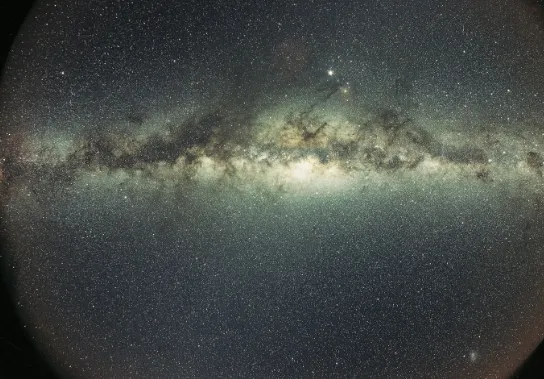Astronomers Present the First 3D Map of Milky Way's Interstellar Dust Properties

Synopsis
Key Takeaways
- First 3D map of Milky Way interstellar dust properties unveiled.
- Research led by Zhang Xiangyu at Max Planck Institute.
- Utilizes data from LAMOST and Gaia observatories.
- Essential for accurate astronomical observations and studies.
- Reveals correlations between dust, star formation, and galaxy structure.
Beijing, March 14 (NationPress) A global team of astronomers has introduced the inaugural three-dimensional (3D) map showcasing the characteristics of interstellar dust within the Milky Way.
This significant advancement will offer essential support for accurate astronomical observations and for research in the fields of astrochemistry and galactic evolution, as reported by the Xinhua news agency.
The study was spearheaded by Zhang Xiangyu, a Chinese doctoral student at Germany's Max Planck Institute for Astronomy, in partnership with his mentor, Dr. Gregory Green.
Utilizing data from China's Large Sky Area Multi-Object Fiber Spectroscopic Telescope (LAMOST) and the European Space Agency's Gaia space observatory, the findings have been highlighted as the cover story in the latest edition of the Science academic journal.
The interstellar medium, which comprises matter and radiation between stars, is vital for the material cycle and star formation in the Milky Way. Most elements heavier than hydrogen and helium in this medium exist as solid dust particles.
This dust absorbs and scatters starlight, causing distant stars to appear dimmer and redder in a phenomenon known as extinction. Most astronomical observations necessitate extinction correction, according to Xiangyu.
By merging precise stellar parameters from LAMOST with low-resolution spectroscopic survey data from Gaia, the astronomers compiled the first all-encompassing catalogue detailing the absorption and scattering effects of interstellar dust for over 130 million stars.
Using this catalogue, they have successfully created a 3D map of dust distribution and properties throughout the Milky Way, extending distances of up to 16,308 light-years.
This groundbreaking achievement capitalizes on LAMOST's unique advantages, such as its extensive field of view and multi-object spectroscopic capabilities, remarked Xiangyu.
The 3D map spans vast spatial dimensions, uncovering strong correlations between dust properties, star formation, and the structure of the Milky Way. It provides crucial insights for research in astrochemistry and galactic evolution, he noted.
Furthermore, the observation of dust distribution challenges long-held assumptions pertaining to the intermediate-density regions near dust cloud centers and proposes potential new mechanisms for the growth of interstellar organic matter, added Xiangyu.
Dust acts as the foundational material for planets like Earth and plays a catalytic role in the Milky Way's chemical evolution. The newly released 3D map opens a new avenue for dust studies and the Galaxy. It not only serves as a vital reference for astronomical observations but also presents new perspectives and opportunities for exploring astrochemistry, star formation, the galactic carbon cycle, and even the origins of life.









